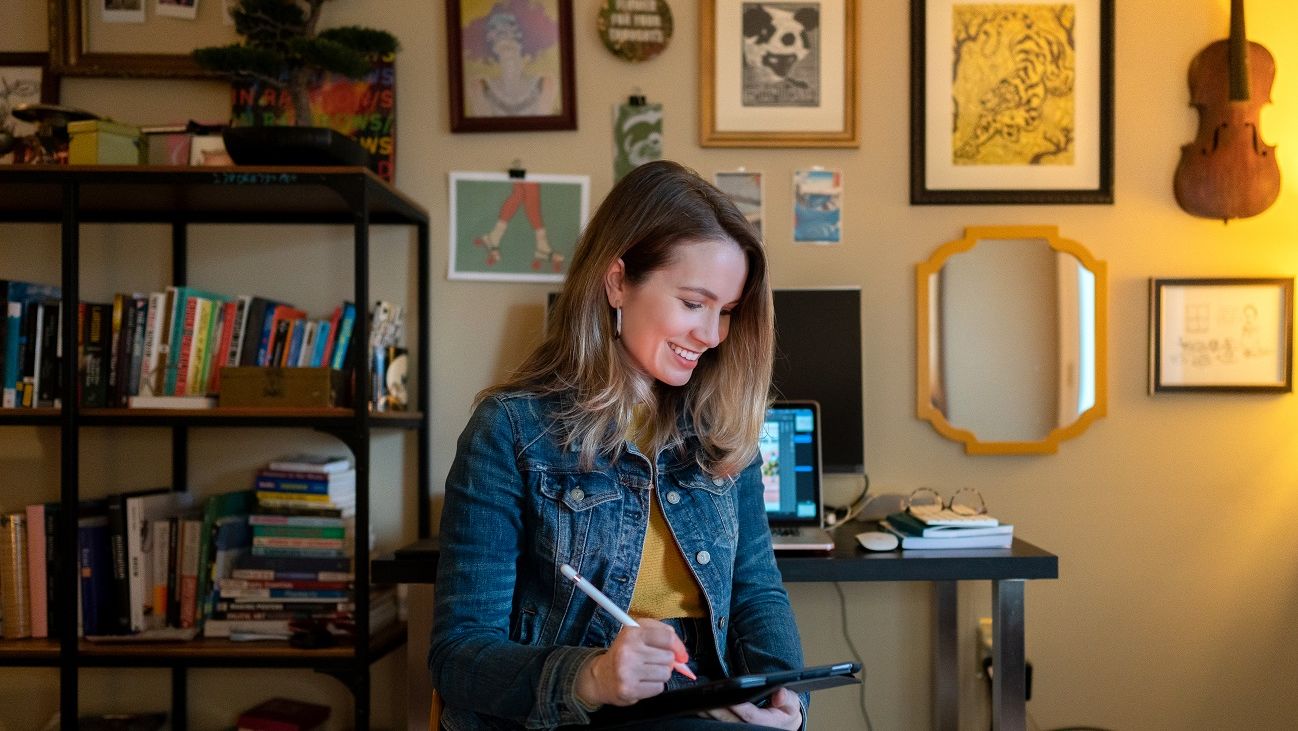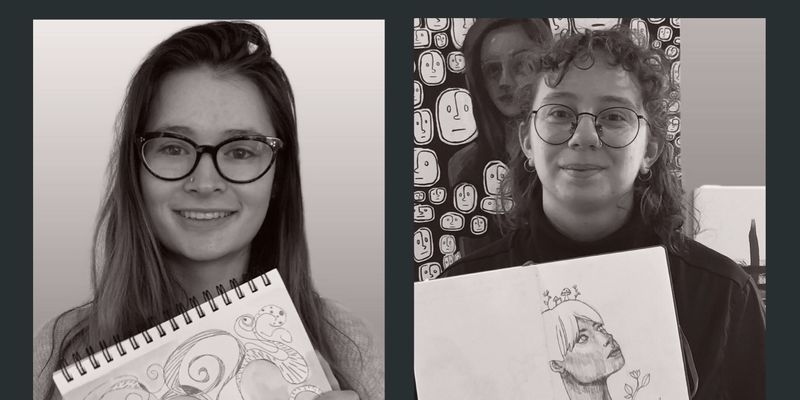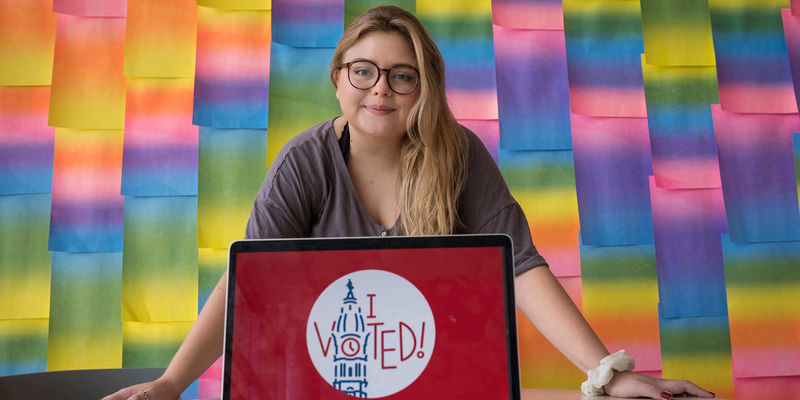Reducing anxiety by design
A graphic and interactive design student at Temple’s Tyler School of Art and Architecture developed and branded an app designed to help people like her who suffer from anxiety attacks.

It strikes without warning. You feel tightness in your chest. Your skin tingles, and then—boom—cold sweat blossoms, your heart rate accelerates, your breathing becomes shallow and rapid and suddenly that chest tightness turns into something more like pain.
Alexandra Dodge, Class of 2021, a BFA candidate in graphic and interactive design at Temple’s Tyler School of Art and Architecture, knows the feeling well. Like millions of Americans who suffer from an anxiety disorder, she also recognizes the surge of panic and the inevitable questions that follow these symptoms, accelerating the neurological brushfire. Is this a heart attack? Am I dying? The answer in almost all cases is no, of course, but anxiety attacks are excruciating and debilitating.
Last fall, as a student in Senior Branding: UX/UI Focus, a Tyler class that explores user experience (UX) and user interface (UI) issues in the design and branding of digital products, Dodge had a chance to channel a lifetime of experience with anxiety to create and brand an app that could help people who suffer from attacks of anxiety and panic.
“I wanted to create a way to use the signals from your body to forecast panic attacks, giving you the ability to get ahead of them by using your coping skills before you spiral out of control,” said Dodge, a non-traditional transfer student who took time off in between her stints as an undergraduate to work, including several years as a social worker helping teens cope with mental health issues.
Dodge’s product, rü anxiety forecast, is an app that tracks the user’s heart rate, body temperature and other signals via an Apple Watch. The app sends notifications to the user and triggers visual aids that facilitate meditation, breathing exercises and other proven techniques to de-escalate panic and prevent attacks. She also created a video to demonstrate how rü anxiety forecast works.
The app took a whole semester to produce. From August to December, Dodge researched user needs; analyzed competing products; developed the product’s brand (name, logo, style and more); created user flow charts and wireframe sketches; and then developed the app.
“These projects typically would have an entire project team on it, with multiple designers working on each aspect,” says Assistant Professor Abby Guido, the course’s instructor. “In this course, students play all these roles.”
The range of UX/UI-focused products designed and branded by Guido’s students was enormous, including a learning management system for a course on personal finance, a virtual makeup app for Zoom, a digital platform for anonymous group therapy for college students and an app for inexperienced gamers to learn from experienced gamers.
The key to the class, Dodge says, is its emphasis on research, a signature of the program’s instruction and one of Guido’s specific areas of focus. Dodge and her classmates spent weeks doing deep background research early in the semester before their design work began. In Dodge’s case, she surveyed potential users of her app, asking anxiety sufferers about their level of interest, what calming techniques they use and what features they would find most useful.
“I really like the way Abby pushes her students to do research,” Dodge said. “The research helped me know what is and isn’t going to work. Understanding research will help me with future projects, whether I go into user interface design or book design.”
Guido also requires each student to write up case studies describing the design and branding process behind their product. It’s a dress rehearsal for presenting work to a client, Guido says—employers want to know how designers think. And because the case studies are posted online, sometimes employers come calling before students graduate. This spring, an employer in the healthcare tech industry reached out to two student designers in the program to inquire about hiring them to produce a menstrual cycle-tracking app called Oh! that they had developed in Guido’s class.
Senior Branding: UX/UI Focus is one of more than a dozen elective courses covering a wide range of subjects—type design, environmental design, interactive design, packaging, art direction, design for the public good and more—that seniors in the major are able to choose from in order to dig more deeply into the subjects that they most want to feature in the portfolios they’ll use to take their next steps as professional designers or graduate students.
Guido is gratified that her course helps provide students with the tools they need to produce a portfolio that highlights their best work and the thinking behind it, but she wants her students to graduate with something that may be just as important: confidence.
“One of my course goals is to instill in students a sense that they can be leaders as designers,” Guido said. “I want designers to be confident sitting at the table where decisions are made. They’re not just decorators; they’re solving problems and really impacting people.”
—Hillel Hoffmann


